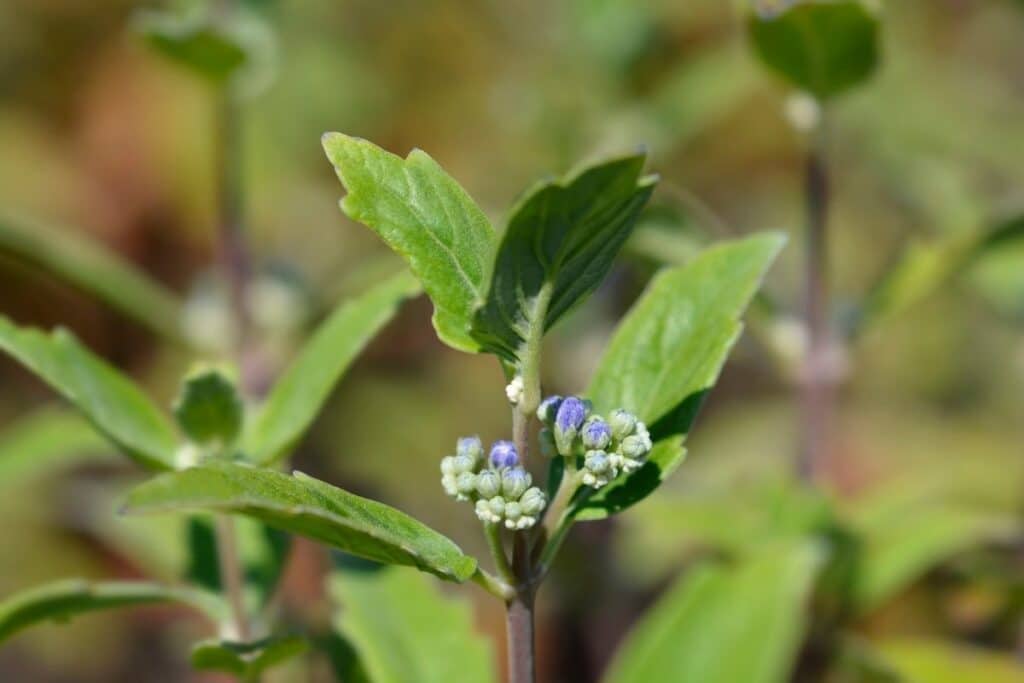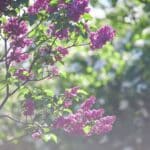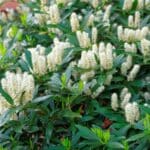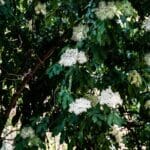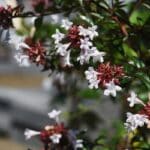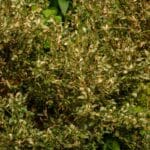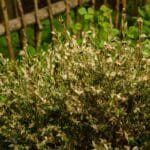Blue Mist is a beautiful, compact sub-shrub with gray-green foliage and masses of showy blue flowers. These plants bloom at a time of the year when many plants have already finished flowering, making them a great late season asset. Read on to learn more on how to grow and care for the blue mist plant.
What Is A Blue Mist Plant?
Caryopteris blue mist, also known as bluebeard, hybrid bluebeard, blue boneset, or blue spirea is a deciduous sub-shrub of the Lamiaceae family. This plant which is technically known as Caryopteris x clandonensis is a hybrid of two east Asian species, C. incana and C. mongholica. The parent plants are naturally found in China, Korea, and Japan, and Southeastern United States respectively. (1)
C. incana is commonly grown, although Caryopteris x clandonensis is the most popular form in cultivation.
These native plants have a mounding growth form and reach a size of up to 3ft (0.9m) tall and wide. Blue mist is fast-growing and reaches this size after a single year’s regrowth.
Being a sub-shrub, these plants persist through the winter as dormant old growth of limited height, before regrowing in the warmer months. Additionally, they exhibit self-seeding behavior, contributing to their natural propagation.
Their seeds disperse in late summer or late fall, ensuring new growth in the following spring. However, gardeners should be aware that blue mist can spread aggressively in favorable condition
The gray-green foliage of this plant has a distinctive smell if crushed, due to the presence of aromatic compounds known as terpenes. Blue mist plants have simple, strongly toothed bright green leaves that are oppositely arranged.
Cultivars
- ‘First Choice’: This cultivar has reddish stems and blue purple flowers, each with a white center. The leaves of this form also develop hints of purple late in the season.
- ‘Dark Knight’: This cultivar is much loved for its dark blue to purple flowers and reddish stems.
- ‘Heavenly Blue’: This large-leaved cultivar has a reddish stem and a bushy to erect growth form.
- ‘Summer Sorbet’ is a compact cultivar that has variegated leaves with yellow margins that grow from purplish stems. This cultivar has a bushy growth form and paler small blue flowers.
Blue Mist Flowers
The bright blue flowers of this plant occur in inflorescences known as cymes in the mid summer to early fall when not many other plants are in bloom. Each flower head holds about 20 very small tubular flowers.
Long after flowering, the inflated flowerheads of these plants still provide some interest to the winter garden.
How To Grow A Blue Mist Plant
Planting Blue Mist Flower
Plant blue mist flower seedlings or nursery-bought plants in the garden after the last frost date in your area. Dig a hole slightly larger than the root ball of the plant and backfill with soil, gently firming it around the roots. Space the plants about 12 to 18 inches apart to allow for proper air circulation and growth.
Soil
Blue mist flower prefers well-draining soil with a slightly acidic to neutral pH level (around 6.0 to 7.0). Loamy or sandy soil enriched with organic matter, such as compost or aged manure, works well for these plants. Good drainage is essential to prevent waterlogging, which can lead to root rot.
Water
Blue mist flower has moderate water needs. Water the plants deeply but infrequently, allowing the soil to dry out slightly between waterings. Once established, they are somewhat drought-tolerant and can withstand periods of dry weather. Avoid overwatering, as this can lead to root rot. Water at the base of the plant to keep the foliage dry and prevent fungal diseases.
Sunlight
The blue mistflower grows best in full sun or partial sun. Choose a location in your garden that receives at least 4 to 6 hours of direct sunlight daily. While it can tolerate some shade, too much shade may result in leggy growth and reduced flowering.
Fertilizer
The blue mistflower is not a heavy feeder and generally does not require much fertilization. However, you can apply a balanced, slow-release fertilizer once in early spring to promote healthy growth and flowering. Follow the instructions on the fertilizer label for proper application rates. Avoid over-fertilizing, as excessive nutrients can lead to lush foliage at the expense of blue mistflowers.
Care and Maintenance
Blue mist is best pruned hard in mid to late spring after the last severe frosts to stimulate the growth of new flowering shoots. (3) In zones 7 and 8 you can also prune back to just above new leaf buds in the spring.
Blue mist bush generally does not require fertilizing, and feeding should be limited to prevent rank, untidy growth unless grown in very poor soils.
Common pests and diseases for blue mist flower (Conoclinium coelestinum) include powdery mildew, aphids, leaf miners and spider mites. Powdery mildew causes a white powdery coating on foliage, while aphids and spider mites suck sap from the plant, leading to leaf distortion and discoloration. Regular inspections and appropriate treatment are essential.
Uses
Horticultural uses
These fuzzy flowers make very attractive and fragrant deciduous border plants or low hedges. Being compact, these plants will also do well in containers.
Additionally, they are excellent for erosion control or as a scolonizing groundcover in naturally wet areas.
Wildlife uses
Blue mist flowers attract butterflies, bees, and other pollinators. These shrubs are regarded as deer proof plants.
FAQs
What can I plant with mist flowers?
Blue mist flowers can be planted with a variety of other perennials and annuals that complement their color and growing conditions. Some suitable companion plants include coreopsis, black-eyed Susan, bee balm, and ornamental grasses.
What is the blue mist flower used for?
Blue mist flower is primarily used in gardens and landscapes for its attractive blue flowers and its ability to attract butterflies and other pollinators. It’s also valued for its long bloom period and tolerance of a wide range of soil and light conditions.
Is blue mist flower the same as ageratum?
No, Blue mist flower (Conoclinium coelestinum) is not the same as wild ageratum. While both plants have blue flowers, they belong to different botanical genera and have distinct growth habits and care requirements. Ageratum species, such as Ageratum houstonianum, are annual bedding plants commonly grown for their fluffy blue flowers in gardens and containers.
Conclusion
In conclusion, mastering blue mist flower care ensures their enchanting presence in gardens and landscapes, captivating them with their delicate blooms and vibrant hues.
With attention to these essential aspects of care, blue mist flowers will thrive, embellishing outdoor spaces with their ethereal beauty and infusing any landscape with charm and tranquility.
Feel free to check our blog for more common shrubs.
References
Reference list
(1) Miller, D. Caryopteris.
https://www.rhs.org.uk/plants/pdfs/plant-trials-and-awards/plant-bulletins/caryopteris.pdf
(2) Toogood, A. Plant Propagation: The Fully Illustrated Plant By Plant Manual of Practical Techniques.
(3) Brickell, C. & Joyce, D. Pruning & Training: What, When and How To Prune.
Close
*image by nahhan/depositphotos

